ADAPTED FROM THE DGA'S ACTION MAGAZINE (SEPT/OCT 1971)
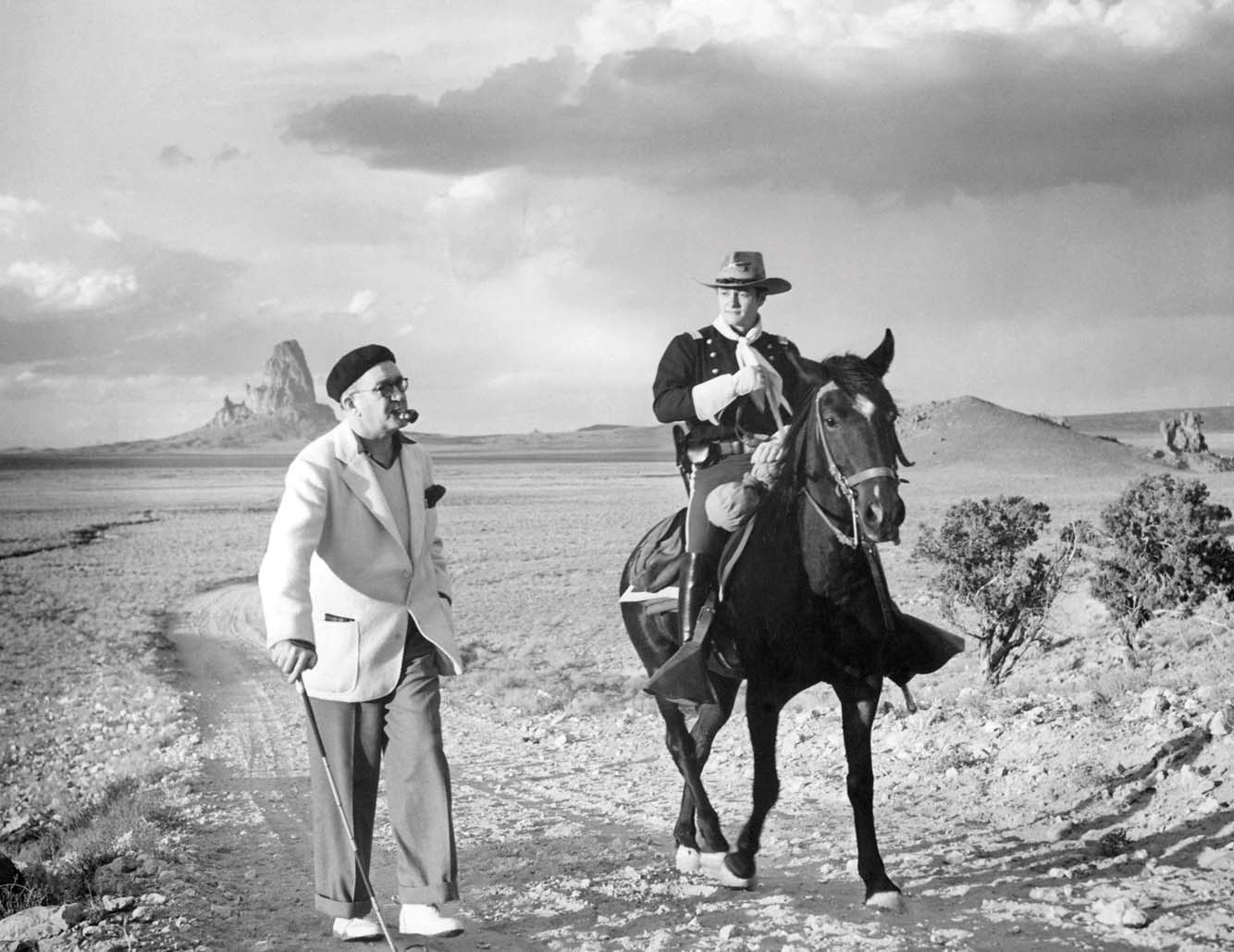 (Photo Credit: PHOTOFEST)
(Photo Credit: PHOTOFEST)John Ford, director
I found the story for Stagecoach by reading it in Collier's. It wasn't too well developed, but the characters were good. "This is a great story," I thought, and I bought it for a small amount - I think it was $2,500. Then I tried to sell it to the studios, but nobody was buying. After the studio heads read it, they said to me, "But this is a Western! People don't make Westerns anymore!"
"Sure, it's a Western," I said. "But there are great characters in it. What's the difference whether it's playing in the West, or wherever? A story is a story, whether it's laid in the West or whether it's Two Gentlemen from Verona." Finally, I got a call from [producer] Walter Wanger who had one more picture to make under his United Artists contract. So I sent him the short story and he said, "That's a pretty good story. I'm thinking of Gary Cooper and Marlene Dietrich," he said.
"I don't think you can go that high on salary with a picture like this," I said. "This is the kind of picture you have to make for peanuts."
"Have you got anybody in mind?" Wanger asked me.
"Well, there's a boy I know who used to be an assistant prop man and bit player for me," I said. "His name was Michael Morrison, but he's making five-day Westerns and calls himself John Wayne now."
"Do you think he's any good?" he asked.
"Yes, I think so," I said. "And we can get him for peanuts."
"OK, go ahead and cast the picture," Wanger said. So he went off and I assembled a good cast. I did the location scenes first. I had driven through Monument Valley, and I thought it would be a good place to shoot a Western. I used it for the first time in Stagecoach. There was a dry lake that was perfect for the Indian attack. We didn't have any camera cars in those days; we just put the camera on an automobile and shot on the run. It was fast. I asked the driver how fast we had gone, and he said 40 to 42 miles per hour. You wouldn't think that horses could go that fast, but they did.
That chase... every half-assed critic says, "Why did it go on so long? Why didn't the Indians just shoot the horses?" I tell them, "If the Indians had done that, they would have stopped the picture." The shoot-out at the end was something I had done once before with Harry Carey - I had done a lot of silent Westerns with Carey and with Tom Mix, but never a talkie. I used the same idea again in My Darling Clementine. It went back to what Wyatt Earp had told me. Wyatt was a friend of mine - in fact, I still have his rifle in the corner of my bedroom. He told me: "I'm not a dead shot. I always walked up pretty close to the other fellow before I fired. I shot people in the shoulder or in the leg, but I never killed them. I left that to my partner."
I did about four days on location, and then we went back and finished the picture on the Goldwyn lot. The script was not prolix; there were no long speeches. I shot it pretty much as it was written. I made the picture for a good price - $222,000, I think it was. Came in $8,000 under budget. After I shot Stagecoach, I worked closely with the cutter.
But there wasn't a helluva lot to do. I cut with the camera. When the picture was put together, Wanger invited a few top people - brilliant brains of the industry who proceed to say how they would have done Stagecoach. Sam Goldwyn said, "Walter, you made one mistake: You should have shot it in color. You should start all over again and make it in color." Douglas Fairbanks Sr. said: "The chase is too long."
Then it was shown to the great producers at RKO, who had turned the project down in the first place. One of them said, "It's just a B picture." Another said, "It's all right, but it's still a Western." Well, of course, the picture went out and hit the jackpot. It started a flood of Westerns, and we've been suffering from them ever since.
Westerns - I never look at them, but I love to make them. Why? Because they're made mostly on location. You're out in the open, away from the smog and the freeways. You're with a bunch of stuntmen who are your friends, and they keep a pitch game going all the time. You eat well - I always insisted on the best possible food on location. You work from dawn until sunset, and you sleep like a baby at night. It's a great life - who wouldn't like it?
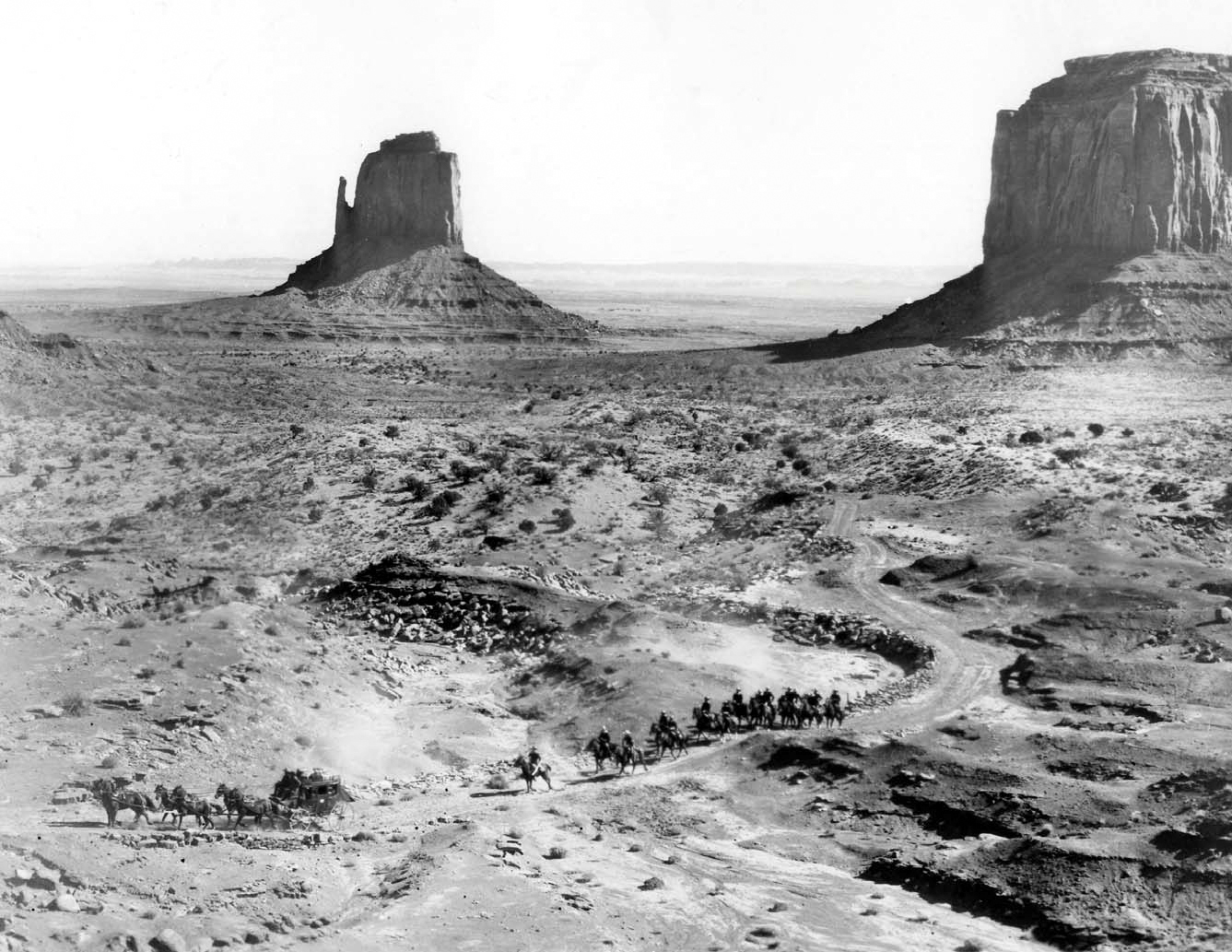 (Photo Credit: AMPAS)
(Photo Credit: AMPAS) Wingate Smith, assistant director
I remember the time we were shooting on location in Arizona, and we were all staying in the little town of Caliente. I got a call at 3 o'clock in the morning from a production man who said excitedly, "It's snowing! You'd better wake up Ford and tell him." I wasn't about to wake up Jack Ford at that hour of the morning. I waited until the regular time to get him up, and I told him, "Jack, there's lots of snow on the ground." To my surprise, he answered, "Great! That's just what we needed."
We took the whole crew out in the snow and shot stagecoach scenes. Merian C. Cooper, who was back at headquarters, kept calling on the shortwave radio to ask Jack how he was going to use those scenes. Jack wouldn't say. For days he wouldn't tell his plan. Then one day he had a scene of the stagecoach coming into the station. He had Andy Devine deliver the line: "I took the high road, because the Apaches don't like snow." That's the way Jack Ford works. The average director wouldn't have worked that day in the snow. But Ford did, and as a result, he got some of the most striking scenes in the picture. There was never any friction on a Ford set. The crew respected him, because they knew what Ford shoots, he uses. Even when he seemed to be asking the impossible, they went along with him.
There was no saying, "It won't work" to Ford. No matter how impossible it seemed, whatever he asked for did work. Like the snow sequence. Actors always respected Jack Ford. They all knew there was only one boss: Ford. They knew they had to be up on their lines; it was too easy for Ford to shoot over their shoulders if they weren't. The actors generally stayed on the set at all times, even on their days off. They'd say, "You never know when Ford will give me a plum."
That was true. Ford was always coming up with plums for the actors, bits of dialogue and business that made the scene stand out. That's how he got great pictures. We got some great stunts in Stagecoach, and nobody got hurt. Under the old system, if a stuntman didn't take his fall correctly the first time, he had to do it over again for free. Usually the director placed the camera and told the stuntman to fall on a certain mark. If he didn't hit the mark, he had to do it over again. Ford didn't work that way. He asked the stuntman, "Where are you going to fall?" Then he placed the camera accordingly. Ford never asked anyone to do anything hazardous or unnecessary.
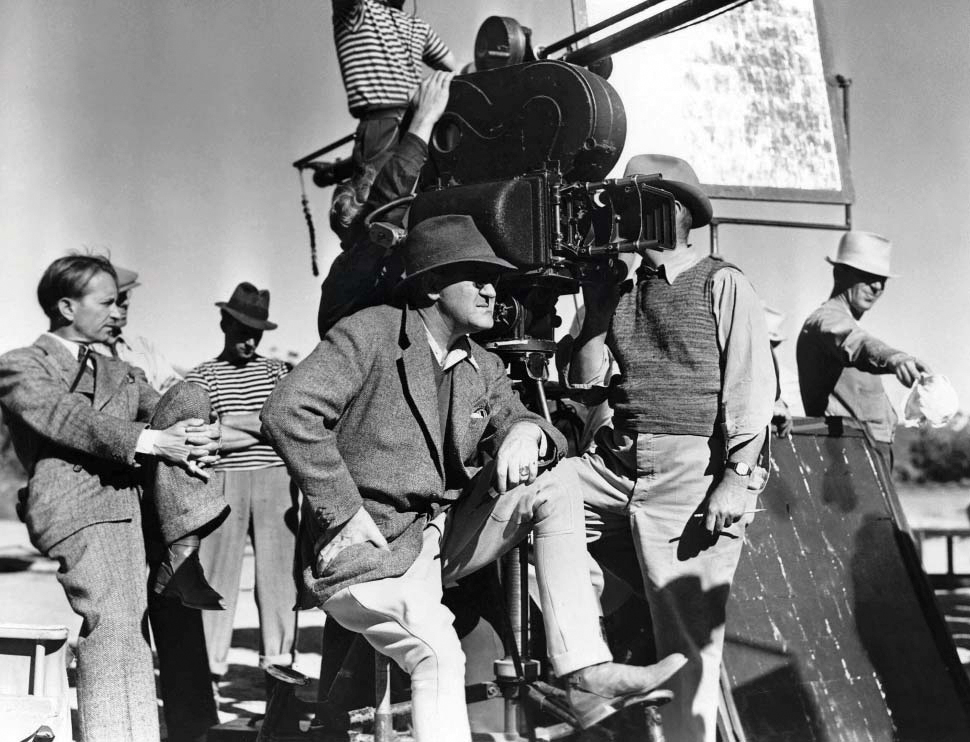 (Photo Credit: KOBAL)
(Photo Credit: KOBAL)John Wayne, actor
Pappy wanted me, but nobody else did. There was a lot of resistance to my playing the part - and with good reason. After all, [you] could get me in a Republic Western for five dollars. So why should they pay two hundred dollars for me in Stagecoach? But Ford held out, and then Wanger decided in my favor. Was Ford tough on me? You bet he was. But I had learned about him when I was propping for him. Ford was very protective of his crews. But he did sometimes pick on certain members of the company. Especially assistant directors. He was hell on assistant directors. He did a pretty good job on me too. I remember once in the beginning of the picture I had a scene where I was supposed to splash my face with water. I turned around and wiped my face with a towel, but I didn't seem to satisfy Ford. He made me do it over and over again, until my face was almost raw from rubbing it with the towel.
Finally [actor] Tim Holt said to him, "Jack, why don't you lay off the poor guy?" Another time was the scene I had with Claire [Trevor] when I said goodbye to her and she went down to the whorehouse. I did the scene three times, and each time Ford said to me, "For God's sake, keep your face up! Don't look down!" I couldn't figure out what was going on, because I had been looking straight ahead. Then I realized he was saying it to me, but he really wanted Claire to look up.
I'll never forget the preview. It was at the Village Theater in Westwood, and it was sensational! The audience yelled and screamed and stood up and cheered. I never saw anything like it. Stagecoach was a helluva picture. Only Ford would have the guts to stage a big Indian chase, and then take me into town to finish off the business I had there. Any other picture-maker would have ended it with the chase.
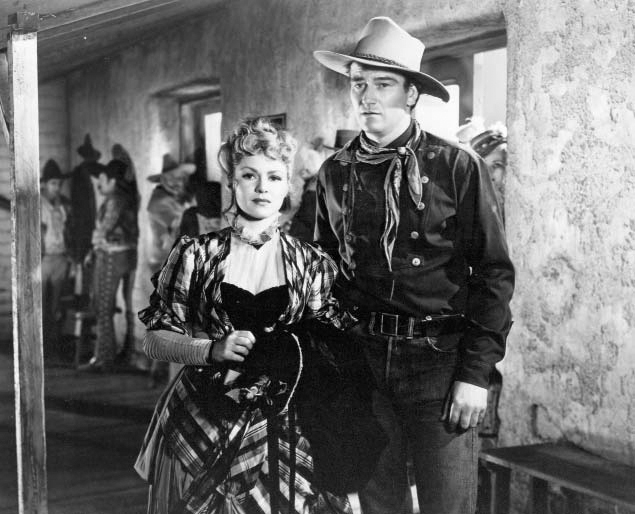 (Photo Credit: PHOTOFEST)
(Photo Credit: PHOTOFEST)Walter Plunkett, costume designer
I had worked with Ford on Mary of Scotland, The Informer and The Plough and the Stars. I have a memory of The Informer. Jack insisted on more and more black shawls. They were eventually on every woman in the picture. I went to my office to sulk and muse that he was being willful and making the costume job ludicrous. A few years later, I visited Dublin and was amazed to see every woman in the city wearing a black shawl over her head. I cabled my apologies to Mr. Ford. Of course, my work on Stagecoach was done before shooting started, but I do have one precious memory from it. It occurred when the costumes were being tested. At that period in my life, I had more than much to learn about costume designing. We made the test of Claire Trevor in her plaid dress, and I was horrified to see that her petticoat was hanging long and exposed below one side of her dress.
I explained to Jack that it would be adjusted. He withered me, saying he was most disappointed, that he thought it was a touch of genius - and now he found he had misplaced his admiration. It was always remembered.
Claire Trevor, actress
Stagecoach was my first picture after five years under contract to Fox. What a pleasure it was! Most of the pictures I had made at Fox were pretty dreary. I went from one to another, and we always worked long hours. Then to make a picture with John Ford! Not only did we quit every day at five or six, John stopped shooting every afternoon so we could have tea!
I did the [screen] test with Duke Wayne, whom I had never met before. He was testing, not me. Ford had us do the scene after the birth of the baby, about the only real scene we had together. The idea was that he was very respectful of me. He didn't know I was a hooker.
Ford had us play the scene standing against a fence. At one point, Ford took Duke by the chin and shook him. "What are you doing with your mouth?" Ford demanded. "Why are you moving your mouth so much? Don't you know that you don't act with your mouth in pictures. You act with your eyes." Ford got the most out of all of us. I was absolutely mesmerized by him. One thing I realized during Stagecoach - that most great directors are inarticulate. Ford himself had a kind of radar. He'd say, "You know, Claire... you can't... that fellow isn't..."
And I'd reply, "Yeah, I know." It all became very clear to me. During our own scenes, the actors didn't get any feeling of great drama; the scenes were too fragmentary. But it was all shaping up in Ford's mind. He knew how all the pieces were going together. There was one scene I was looking forward to. It was the one where Duke finally says that he'd like to see me after the whole thing was over. Up to that time, Ford had set up the romance merely by looks that Duke and I had exchanged. At last I came to my chance to be romantic.
When I came on the set, Ford looked at the page and a half script and said, "Too mushy." He threw everything out but two lines of dialogue. I was crushed.
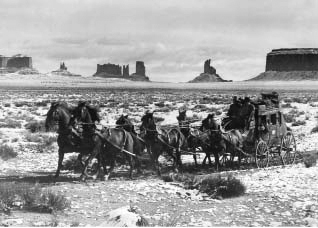 (Photo Credit: PHOTOFEST)
(Photo Credit: PHOTOFEST)Yakima Canutt, stuntman
From 1932 on, I had been working with John Wayne in a flock of Westerns. When Wayne was hired for Stagecoach, Ford sent for me and gave me the script to read. I went back to Ford and told him some ideas I had about doing the stunts. One of the things I started to discuss with him was a sequence in which the stagecoach came to a stream and saw the stage station burned by Indians on the other side. The script called for the coach to be lashed with logs and floated down the stream to escape the danger.
"You can forget about that," said Ford. "They tell me it can't be done."
"I don't know about that, Mr. Ford," I answered. "It seems to me you can do almost anything if you have enough time and money."
With Ford's approval I went to work on devising a way to float that stagecoach. Some fellow over at Paramount helped me devise some hollowed-out logs that could be attached to the coach, two on each side. They had to be planned just right - big enough to float the coach, but high enough for the wheels to reach the ground. Ford OK'd my plans and sent me up to Kernville with a crew to test the rig. I got it all set up and telephoned Ford in Hollywood.
"Put eight people in it tomorrow and see if it works," he told me. I did it, and telephoned him that everything went fine. "OK, we'll be up tomorrow to shoot it," he said.
When the company arrived, everything was ready to shoot. I put on pads to double for Andy Devine as the driver. Ford shot the crossing in one take. We finished the picture with the Indian chase on the flat lake bed at Victorville. I knew by now that Ford liked to shoot fast and didn't want any delays, so I planned everything as closely as possible. We had a lot of saddle and horse falls to do first. So the night before we started on 'em, I hired a farmer to disc 15 to 20 acres of the lake with his tractor. That way, we'd have soft ground to land on and get the job done faster and safer.
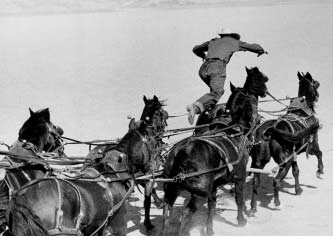 (Photo Credit: AMPAS)
(Photo Credit: AMPAS)Dorothy Spencer, editor
I remember Stagecoach because it was one of the first good pictures I worked on. It was a joy to be on it. Even though John Ford scared the dickens out of me. You never knew whether to take him seriously or not. I cut the whole picture, under the supervision of Otho Lovering. The Indian chase was the toughest sequence to do. There was a lot of footage on that one. Besides the location shooting in Arizona, Ford made a scene in the stagecoach with plates that Lovey had shot on second unit.
Ford was right: He cut in the camera. He got what he wanted on film, then left it to the cutter to put it together. Unlike most other directors, he never even went to the rushes. He left you alone to do your work. But if you did something he didn't like, he'd let you know about it.
Walter Reynolds, sound
I built and made all the sound effects on Stagecoach, and I did all the dubbing. It was a grand show, and I was delighted to be working with such a great director as John Ford. He was a very definite man. Once [editor] Otho Lovering had shot some second unit work, and Ford disagreed with him on it. Lovey stood his ground. So Ford sent the prop man, Sammy Bricker, to the restaurant for a silver platter with a cover. Ford lifted the cover and a hot potato was sitting there.
"OK," said Ford, "you can handle anything - let's see you handle that!"
One thing I remember about the shooting. John Wayne was having a lot of trouble with a scene he was doing with Claire Trevor. He just couldn't get it. So Ford told him: "Just raise your eyebrows and wrinkle your forehead." Wayne's been doing that ever since.
In those days, we didn't take any protection sound on scenes like the chase. All that was filmed silently. I had to supply all the sound effects. I had to scrounge for whatever effects I could find - there were no libraries where you could get anything you wanted, like there are today. For the chase, I went over to Columbia and paid a dollar a foot for what I needed. I didn't buy sound for the entire sequence; for 500 feet, it would have cost me $500. Too much. So I bought two 10-foot lengths of horses galloping. Then I looped them and I ran them over and over, one after the other. Ford loved to underplay scenes. For the Indian charge, I had put in a bunch of war whoops. "Take 'em out," he ordered. I did, and it was much better that way.
Andy Devine, actor
The first time I worked for John Ford was in 1919, when he came to Arizona to make Ace of the Saddle with Harry Carey. I was working on a ranch then, wrangling cattle and horses, and he gave me a job in the picture. I didn't work for him again until Doctor Bull, with Will Rogers, in 1933. Then he sent for me when he was doing Stagecoach. One day he got sore at me and said, "You big tub of lard, I don't know why the hell I'm using you in this picture." I answered him right back: "Because Ward Bond can't drive six horses." Ford didn't talk to me for six years. But I worked for him again, of course. Sometime you'd like to kill the son of a bitch. But, God love him, he's a great man.